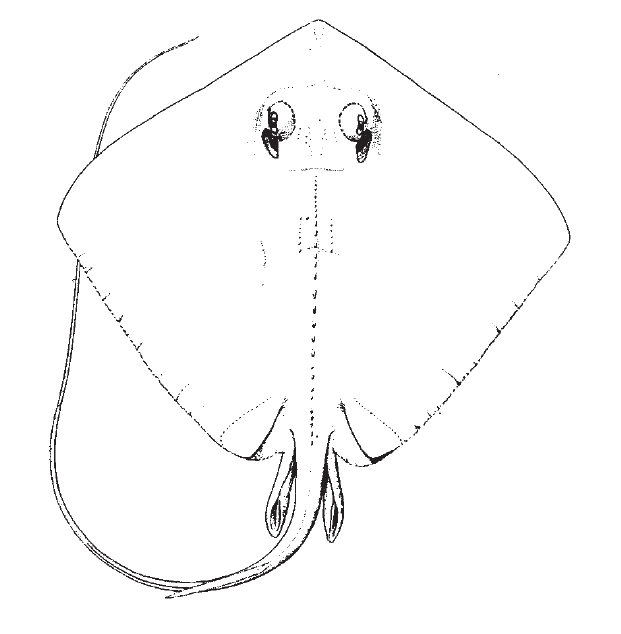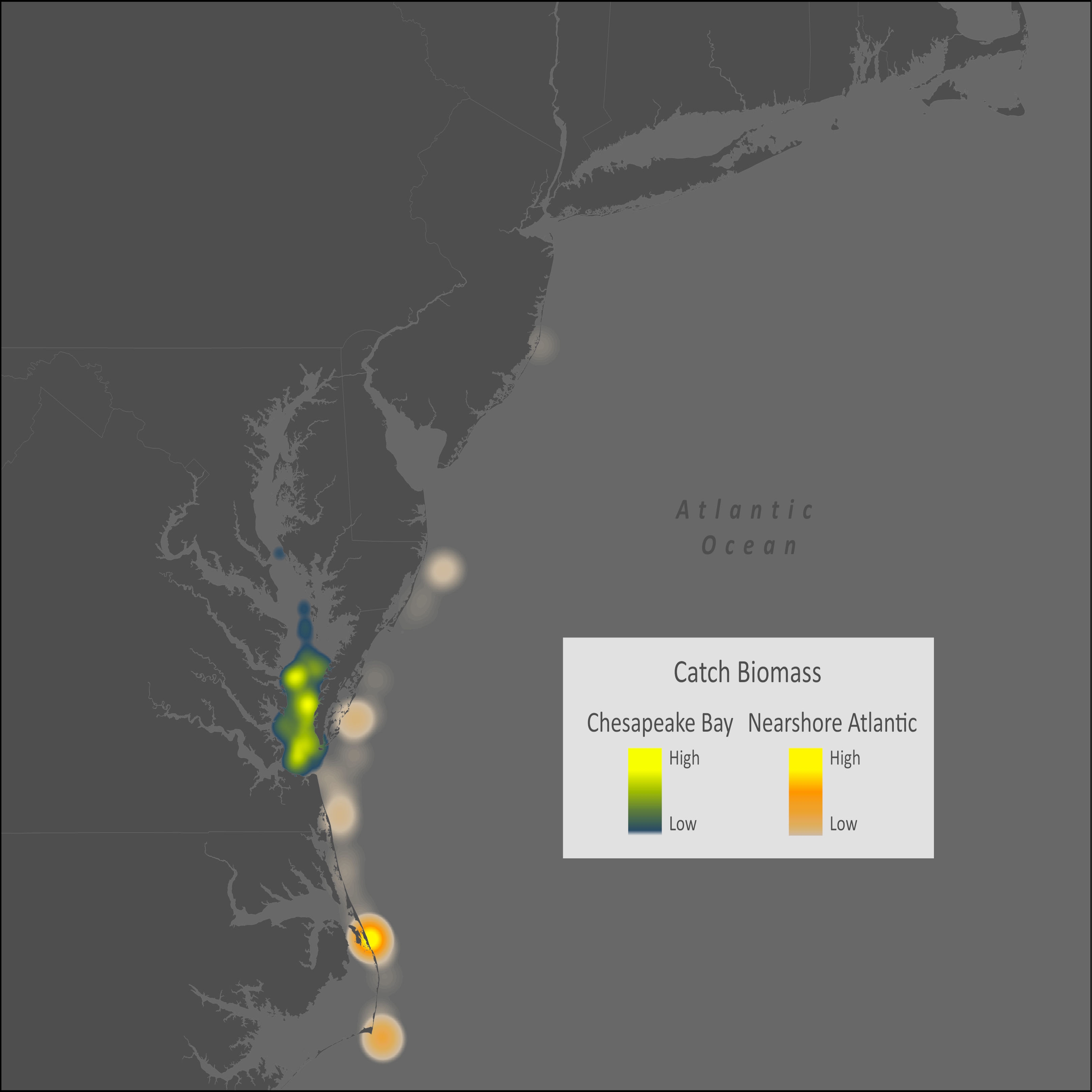Southern Stingray - Dasyatis americana
*Information from FAO Species Identification Guide Western Central Atlantic*

Size
Maximum: 150 cm disc width; males mature at 51 cm disc width, females mature at 75 to 80 cm disc width, and young are 17 to 18 cm at birth.
|
Habitat, biology, and fisheries
Inhabits shallow waters, burying in sandy bottoms (more rarely, muddy bottoms). This species is an active swimmer, migrating in the summer months along the surface to the higher latitudes. It is found in water ranging from 15.4 to 30.3°C, generally at high salinities (28.5 to 36.2‰) but occasionally occurs in estuaries and fresh water. Feeds on bottom-dwelling invertebrates, mainly bivalves and worms; also on shrimps, crabs, and small ray-finned fishes. Litters range from 3 to 5. Caught mainly with trammel
nets and bottom longlines; also with spears. Mainly east coast of the USA and Venezuela; to a lesser extent north coast of Colombia. Marketed salted; the flesh of the disc is well esteemed; remainder of body used in the preparation of gelatin and good quality oil. Very destructive to cockle and oyster farms; also dangerous to bathers and fishers
because of the wounds it can inflict with its
poisonous spine.
|
Distribution
Widely distributed from New Jersey to Florida, throughout the Gulf of Mexico, Bahamas, and the Greater and Lesser Antilles, and bordering the northern coast of South America to southeastern Brazil.
|



